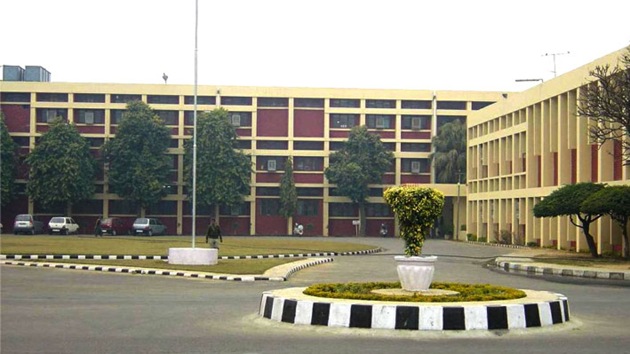Column | Once again, Punjab Agricultural University is under the knife
Punjab government must not commit the blunder of acceding to myopic vision of vested interests to carve out a horticulture university from PAU. It will be a fatal blow to the country’s premier agricultural institution
The concept of state agricultural universities was based on generating wholesome integrated knowledge, understanding and application of science in improving productivity and production of field crops, horticultural enterprises and livestock in respect of both quantity and quality. In Punjab, farming is quite diversified. Mixed farming incorporates field crops, fruits, vegetables and livestock.

With an objective to providing integrated solutions to problems faced by the farm sector, agricultural universities were set up in every state on land grant pattern of US universities. Punjab Agricultural University (PAU) was the second such university after the one at Pantnagar in Uttar Pradesh, which was inaugurated by then prime minister Jawaharlal Nehru in 1962. PAU played a leading role in ushering in the Green Revolution, especially in Punjab, and contributed in making the nation food self-sufficient.
The university carved its place among the country’s leading institutions and has been recognised at the international level for its research output, quality of education and contribution in the development of the farm sector. In recent years, it has developed less-seeded kinnow, improved Bt cotton variety, high-yielding short-duration varieties of rice and the first zincated variety of wheat.
In 2006, PAU came under the political knife, and a veterinary and animal husbandry university (GADVASU) was carved out of it, maiming it by one-fourth. Ridiculously, even the fodder section was transferred to the new university on the plea that animals eat it. One wonders why then by the same argument wheat, rice, corn, vegetables and fruits production should have not been transferred to the medical university because humans eat these products! However, the financial position of the government permitting, there could have been no objection to setting up a new university separately, which could compete, supplement and complement the research at PAU. Yet, to take away its departments, and divide assets, infrastructure and budget hit the very vitals of this academic institution, negating the integrated concept of growth and development of the farm sector.
ANOTHER SURGICAL STRIKE?
Now, once again, it seems some person(s) with access extraordinary to Punjab chief minister Capt Amarinder Singh is/are planning another surgical strike on the PAU, mooting a proposal to carve a horticultural university out of this institution, which, if pursued, will render the PAU a non-entity. Research and education in horticulture crops will need most of the same department as for other field crops such as genetics, bio-chemistry, molecular biology, entomology, plant pathology, food technology, farm machinery, soil and water engineering, agricultural economics and marketing, agriculture business management, agricultural extension etc. How can these departments be divided without debilitating the agricultural institution beyond repair!
Stretching the same logic, should there be an independent vegetable university, fruit university, cereal crops university and pulse crops varsity? Though PAU as a premier institute catering to agricultural research and education in the state has been ranked number two by the Union ministry of human resources and development, the university itself needs strengthening financially rather than weakening through bifurcation.
BETTER, VIABLE OPTIONS
For impetus to horticulture in Punjab, there are better and viable options. The first is to strengthen the fruits and vegetables departments along with other related departments through additional funding and staff positions. A centre of excellence in horticulture crops can be created within the university, which would complement the research activities of the above departments by focussing on basic and strategic research in horticultural crops. No additional infrastructure will be required. For a fund- starved state this is a better option.
Another option is to strengthen specialised horticultural research in production areas. There is a northern belt where kinnow and vegetables are grown and the second is the south-western belt where mainly kinnow is grown. In these regions, PAU has its research farms that can serve as specialised centres of research. These should be research centres focusing on seed and nursery production of fruits and vegetables. The state government may provide additional land and funds for this purpose to the PAU.
Yet another and the most important viable option to strengthen horticulture research in the state is to expedite the setting up of the Postgraduate Institute of Horticultural Research and Education (PGIHRE) in Amritsar, which has been approved by the Indian Council of Agricultural Research (ICAR). The setting up of PGIHRE was announced by the Union finance minister in 2015. The institute is to be funded by the Centre and only land is to be provided by the state government.
For research, land at Attari (Amritsar) and Abohar have been marked. This institute requires 10 acres near Amritsar for an administrative complex and residences. PGIHRE has the provision of more than 200 scientific positions for horticultural research and education. Funds earmarked for the institute by ICAR are held up due to delay in land acquisition for building the campus near Amritsar.
This is the best option for the cash-strapped Punjab government. Under this option, long-term financial sustainability of the institute is also ensured.
The state government must not commit the blunder of acceding to vested interests to carve out a horticulture university out of one of the top-ranking agricultural universities of the country and weaken agricultural and horticultural research in the state.
It is hoped that the powers that be are listening.
(The writer is the chancellor of Central University, Bathinda, and a noted farm economist. Views expressed are personal)



